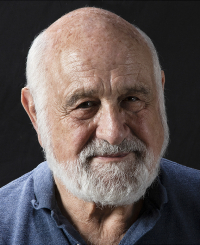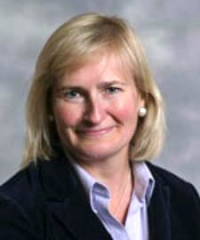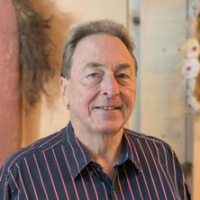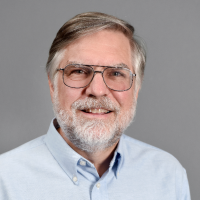How Humans Came to Construct Their Worlds
Biographical Sketches: Co-Chairs
University of California, San Diego
Michael Arbib is an Adjunct Professor in Psychology at UCSD and Emeritus as University Professor, Fletcher Jones Professor of computer science, and professor of biological sciences, biomedical engineering, electrical engineering, neuroscience and psychology at the University of Southern California. Born in England in 1940, Arbib grew up in Australia and received a B.Sc. (Hons) in pure mathematics from Sydney University. He received his Ph.D. in mathematics from MIT in 1963. After five years at Stanford, he became founding chairman of the Department of Computer and Information Science at the University of Massachusetts at Amherst in 1970, and remained in that department until his move to USC in 1986. Michael Arbib's main contribution to CARTA addresses the question "how did the brain get language?" He has used computational modeling to assess two complementary themes. (i) Comparative neuroprimatology: Comparing the brains, behaviors and social interaction of extant monkeys, apes and humans to ground hypotheses on our last common ancestors with monkeys and apes and the changes that must have occurred to equip Homo sapiens with a language-ready brain. (ii) To work back from computational models for neurolinguistics to contribute to an EvoDevoSocio approach to the cultural evolution whereby humans went from pantomime via protolanguages to diverse languages, equally privileging signed and spoken languages. A current concern is with implications of such a framework for the architecture of the built environment. His current research focuses on the ABLE Project (Action, Brain, Language, Evolution) linking data on brain mechanisms in macaque, chimpanzee and human within an evolutionary framework. He also explores the possible roles of neuroscience in the architecture of the built environment. Arbib is the author or editor of over 40 books, including How the Brain Got Language: The Mirror System Hypothesis (Oxford University Press, 2012), the edited volumes Language, Music and the Brain: A Mysterious Relationship (The MIT Press, 2013) and From Neuron to Cognition via Computational Neuroscience (with James Bonaiuto, The MIT Press, 2016), and his single-authored book When Brains Meet Buildings: A Conversation Between Neuroscience and Architecture (Oxford University Press, 2021), https://global.oup.com/academic/product/when-brains-meet-buildings-9780190060954.
German Archaeological Institute
My dissertation is based on the assumption that today's perception of the landscape of the Neolithic site Göbekli Tepe (southeast Turkey) arose through a semantic transfer of the singularity attributed to the place to the landscape, but is not based on research into the landscape. Various aspects that shape the current narrative about Göbekli Tepe, and especially its landscape, are seen as a reflection of recent ways of thinking and perception. In my work, I therefore carried out verifiable landscape analyzes and examined patterns of perception of landscape, space and archeology against the background of cultural-historical reflection. With the help of this approach, which combines archaeological and geographical working methods in an interdisciplinary manner, Göbekli Tepe was reinterpreted. The site is not seen, as has previously been assumed, as driving Neolithization forward, but rather as a backward-looking place where the Paleolithic way of life was retained. It is shown that the choice of location was not based on the most commonly cited reasons of desired control, efficiency or prominence. Instead, the architecture and location of Göbekli Tepe can be interpreted as an expression of the uncertainty that the transformation process from an appropriative to a productive way of life triggered in the early Neolithic.
Biographical Sketches: Speakers
University of Liverpool
Larry Barham, PhD University of Pennsylvania, has been researching human evolution in sub-Saharan Africa since 1982. His doctoral research was in Swaziland (Eswatini); since 1993 he has focused on Zambia. His approach is cross-disciplinary, whilst retaining a primary interest in the cultural and evolutionary impact of early technological transitions. Recent excavations led to the discovery of the oldest wooden structure, dated to ~500,000 years ago at Kalambo Falls, Zambia.
University of Liverpool
Barnabas Calder is head of the History of Architecture Research Cluster - the largest architectural history research grouping in the UK. He is working on a history of the relationship between energy and human culture, and a complete works of Denys Lasdun, funded by the Graham Foundation and in collaboration with the RIBA British Architectural Library Special Collections. Barnabas also works on British architecture since 1945.
California State Polytechnic University, Pomona
Michael Fox is a founding partner of the award winning architectural practice of FoxLin Architects. He is a registered architect, professor, author, and contractor. He is the author of two books by Princeton Architectural Press including Interactive Architecture and IA: Adaptive World. He is the recently twice elected President of ACADIA (Association of Computer Aided Design in Architecture). His practice, teaching and research are centered on interactive architecture with a secondary focus on architecture for outer space and has carried out several projects for NASA. Fox is the past founder and director of the Kinetic Design Group at MIT as a sponsored research group to investigate intelligent kinetic architecture. Michael has lectured internationally on the subject matter of interactive, behavioral and kinetic architecture. He has won numerous awards in architectural ideas competitions and his masters’ thesis at MIT received the outstanding thesis award for his work on computation and design processes. Fox’s work has been featured in numerous international periodicals and books, and has been exhibited worldwide including the SFMOMA, the Venice Biennale, The Smithsonian Air and Space Museum among others. His work has been funded by NASA, the Annenberg Foundation, the National Space Grant Foundation, the Graham Foundation and others. Fox is a Full Professor of Architecture at Cal Poly Pomona and has taught on the subject matter of interactive, behavioral and kinetic architecture at MIT, The Hong Polytechnic University, the Art Center College of Design in Pasadena and Southern California Institute of Architecture (SCI_ARC) in Los Angeles as well as numerous international workshops.
University of St. Andrews
I have several avenues of research currently underway all stemming from an interest in relationships between behaviour and the correlated neural processing, specifically the processing of spatial information; adaptive specialisation of memory; effects of behavioural experience on the development of the avian hippocampus, particularly in migrant songbirds; field tests of spatial memory and context-dependent choice in hummingbirds.
University of Queensland
Professor Paul Memmott is an anthropologist and architect and for some decades was the Director of the Aboriginal Environments Research Centre at the University of Queensland (School of Architecture and Institute for Social Science Research). This has now become the Aboriginal Environments Research Collaborative (AERC) within the School of Architecture, Design and Planning. The AERC has provided and continues to provide an applied research focus on a range of topics in relation to Indigenous populations, including institutional architecture, vernacular architecture, housing, crowding, governance, well-being, homelessness, family violence and social planning for communities.
Arizona State University
Dr. Michael E. Smith is an archaeologist at Arizona State University with two research foci: Excavation of houses at Aztec sites, and the transdisciplinary study of premodern cities in relation to contemporary urbanization. His book, At Home with the Aztecs (2016) won the Best Popular Book award, Society for American Archaeology; his latest book is Urban Life in the Distant Past: The Prehistory of Energized Crowding (2023, Cambridge University Press).
The State University of New York at Buffalo
Kristine Stiphany Ph.D., AIA, is an Assistant Professor, Department of Architecture, at the University of Buffalo. Stiphany is a multidisciplinary urban scientist, designer, and scholar of Latin American urbanism interested in the politics and design agency of urban transformation, with a particular focus on the role of informal housing in community and urban infrastructural systems. She is the founder and principal of Chapa Studio, a digital humanities initiative of citizen scientists for social justice in urban transformation. Supported by grants and fellowships from the National Science Foundation (two), the Andrea von Braun Foundation, and the J. William Fulbright Fellowship, Kristine's practice, scholarship, and teaching frames-built environments not only as technological artifacts, but a spatial politics for transforming where and how urbanization-vulnerable communities live in cities.
University of Edinburgh
I studied ancient history and archaeology at Birmingham University, and went on to write a doctoral thesis on the metal industry of Cyprus in the Early and Middle Bronze Ages. Through that, I became interested in investigating the transition that introduced the radically new features of the Early Bronze Age to Cyprus. For several years I worked on new aspects of the Cypriot Neolithic, which led me to believe that there were earlier phases of the Neolithic that had not been discovered (which has proved true). In the late 1970s I excavated in northeast Syria, and in the 1980s joined the international salvage archaeology programme working on sites to be lost behind a dam on the Tigris in north Iraq. That work led to the opportunity to excavate a very early Neolithic settlement at Qermez Dere, near Telafar. Since 1990, my research has been increasingly theoretical, and, since retirement from active teaching in 2003, I have been able to pursue that work more productively.











